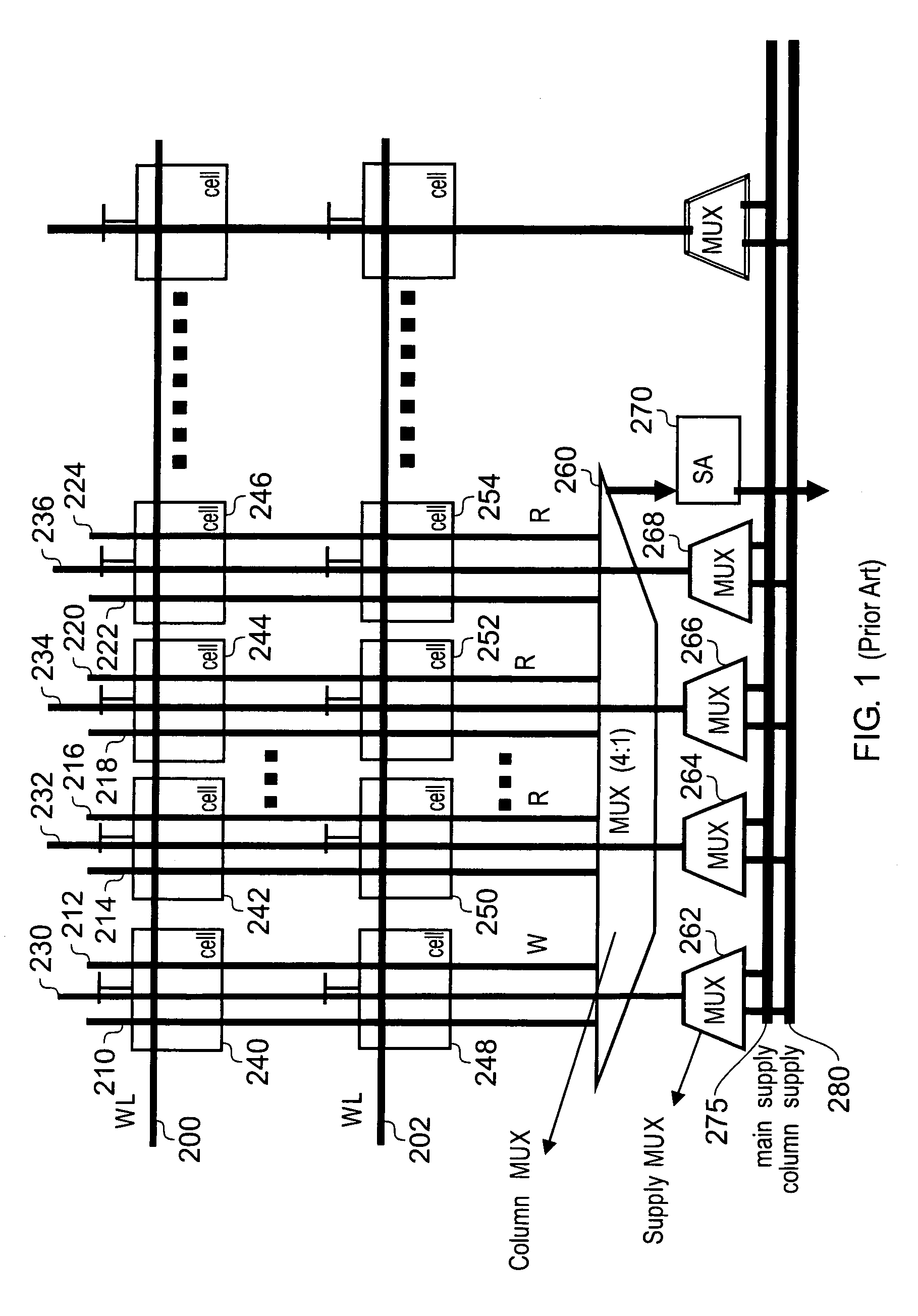Memory device and method of operating such a memory device
a memory device and memory technology, applied in the field of memory devices and methods of operating such memory devices, can solve the problems of significant failure rate, adversely affecting the predictability of operation, and increasing the behavior of individual memory cells, so as to increase the read current through the memory cell, and increase the stability of the addressed memory cell
- Summary
- Abstract
- Description
- Claims
- Application Information
AI Technical Summary
Benefits of technology
Problems solved by technology
Method used
Image
Examples
Embodiment Construction
[0061]FIG. 2 is a block diagram of a memory device. The memory device 10 has a memory array 20 consisting of a plurality of memory cells arranged in rows and columns. Each row has a word line (WL) connected thereto, and each column has at least one bit line (BL) connected thereto, the exact number of bit lines connected to each column being dependent on the implementation. In one example implementation, the memory array consists of SRAM cells, and a pair of bit lines are connected to each column of cells.
[0062]When a memory access request is received by the memory device, the address specified by the memory access request is routed over path 60 to a row decoder 30 and to a data path access unit 40. The row decoder 30 is arranged to decode the address and dependent thereon drive a control signal over one of the word lines in order to select one of the rows within the memory array 20. Similarly, the data path access unit 40 is arranged dependent on the address to identify the column o...
PUM
 Login to View More
Login to View More Abstract
Description
Claims
Application Information
 Login to View More
Login to View More - R&D
- Intellectual Property
- Life Sciences
- Materials
- Tech Scout
- Unparalleled Data Quality
- Higher Quality Content
- 60% Fewer Hallucinations
Browse by: Latest US Patents, China's latest patents, Technical Efficacy Thesaurus, Application Domain, Technology Topic, Popular Technical Reports.
© 2025 PatSnap. All rights reserved.Legal|Privacy policy|Modern Slavery Act Transparency Statement|Sitemap|About US| Contact US: help@patsnap.com



